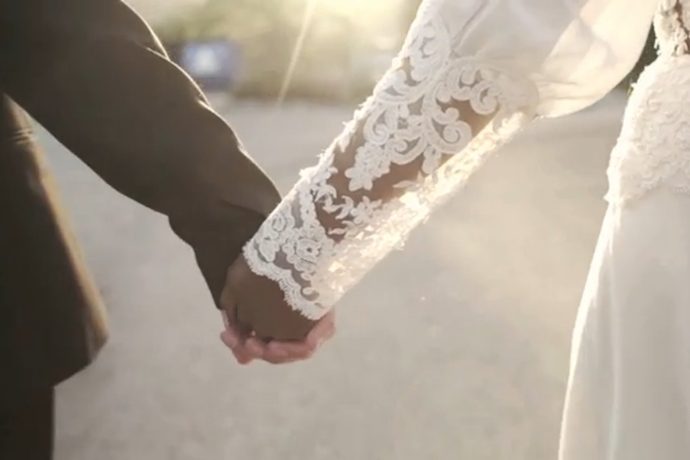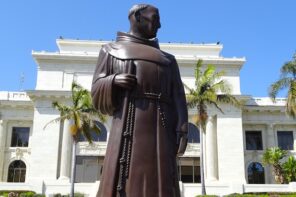In the United States, who defines religious freedom? The First Amendment? The courts? The legislature? Religious groups and individuals themselves? What happens when it’s both, and the lines get blurred?
In a newly released video meant to showcase the “unique meaning of marriage,” the U. S. Conference of Catholic Bishops’ Subcommittee for the Promotion and Defense of Marriage posits that “proposals to ‘extend’ and ultimately ‘redefine’ marriage to include two persons of the same sex threaten not only to empty marriage of its meaning, but also to collapse other fundamental pillars of society. One of those pillars is religious liberty.”
My first thought when I read this sentence: here we go again with a warped interpretation of US religious freedom laws. But then I clicked around the website and found that the Bishops don’t cite the First Amendment, or even the Constitution generally, in their justification for opposing same-sex marriage in the United States. It’s more complicated.
Instead, they quote Pope John Paul II:
Religious liberty is ‘the right to live in the truth of one’s faith and in conformity with one’s transcendent dignity as a person’”…
And the Catechism of the Catholic Church:
Nobody may be forced to act against his convictions, nor is anyone to be restrained from acting in accordance with his conscience in religious matters in private or in public, alone or in association with others, within due limits.
Religious liberty “entails not only the freedom to worship in private, but also the freedom to follow the tenets of one’s faith in the public sphere,” the Bishops say. In this case, following those tenets means blocking laws that allow same-sex marriage and protect people in those marriages from discrimination.
It’s perfectly reasonable that the Catholic Bishops would draw on church teaching to make this point. Their duty is to the Catholic Church, a supranational entity that thinks in terms of centuries, not just the months on the Supreme Court’s calendar.
But this video was released to an audience in the United States, where the language of religious freedom is highly politicized and fiercely contested. The Bishops’ theological argument can’t help but be political. (I’m going to assume the Church knows what waters it’s wading into here.)
The danger here is that these two conceptions of religious freedom—the church’s and constitutional—are hard to separate once they become talking points and slogans in the public sphere. And if the church’s conception of religious freedom is given more weight than another, the whole secular framework of religious freedom breaks down.
From a secular point of view, allowing religious groups to define the terms of religious freedom is an affront to the ostensibly neutral and egalitarian framework of US religious freedom itself. Religious actions should only be protected insofar as they do not cause harm to others (like prevent them from getting married, for example).
So who decides when that harm occurs? And which religious liberty is legitimate? If we were to dispute the Catholic Bishops’ assertion that national marriage laws might cause Catholics to violate their conscience, we wade into the murky waters of belief—precisely the area that’s supposed to be protected. But as it stands, the church’s vision of religious freedom conflicts with US law.
Perhaps, as Indiana University religion and law professor Winnifred F. Sullivan has argued, religious liberty in the United States has always been a fiction. “There is no neutral place from which to distinguish the religious from the non-religious,” she wrote in The Immanent Frame after the Supreme Court’s 2014 Hobby Lobby decision.
Few religions are self-contained, and religion in the United States has a long history of influence in the public sphere. But a society with hundreds of differing religions cannot allow each to define what that sphere looks like. Complete religious freedom, in a pluralistic society, may just be impossible.





